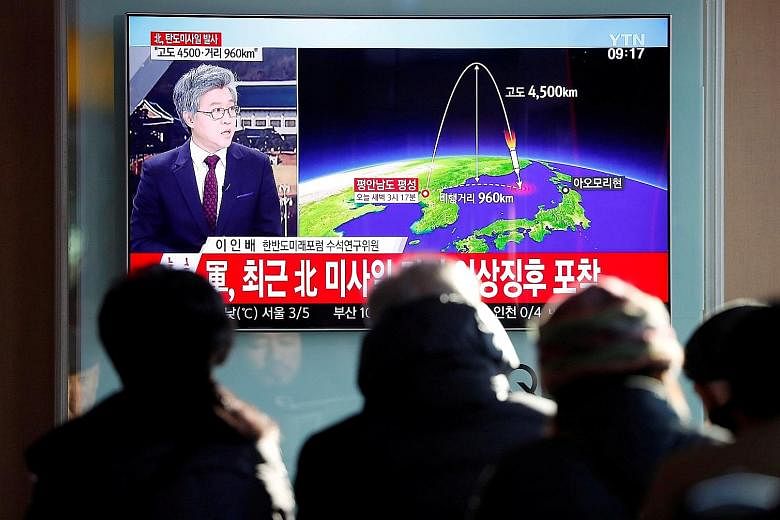WASHINGTON • At the start of Mr Donald Trump's presidency, United States intelligence agencies told the new administration that while North Korea had built the bomb, there was still ample time - upwards of four years - to slow or stop its development of a missile capable of hitting a US city with a nuclear warhead.
The North's young leader, Mr Kim Jong Un, faced a range of troubles, they assured the new administration, giving Mr Trump time to explore negotiations or pursue countermeasures.
Mr Kim tested eight intermediate-range missiles in 2016. And while the North had carried out five underground atomic tests, the intelligence community estimated that it remained years away from developing the more powerful hydrogen bomb.
Within months, those assessments looked wildly out of date.
At a speed that caught US intelligence officials off guard, Mr Kim rolled out new missile technology and in quick succession demonstrated ranges that could reach Guam, then the West Coast, then Washington. In September, he detonated a sixth nuclear bomb - the North's first successful test of a hydrogen weapon, with an explosive force some 15 times greater than the atomic bomb that hit Hiroshima.
The US intelligence's inability to foresee the North's rapid strides now ranks among the US' most significant intelligence failures, current and former officials said. That disconnect helps explain the confusion, mixed signals and alarm that have defined how Mr Trump's untested national security team has responded to the nuclear crisis.
In an interview, National Security Adviser H.R. McMaster acknowledged that Mr Kim's race to the finish line "has been quicker and the timeline is a lot more compressed than most people believed".
Senior intelligence officials also acknowledged they made two key assumptions that proved wrong.
They assumed wrongly that the North would need as much time to solve the rocket science as other nations did during the Cold War, underestimating its access to advanced computer modelling and foreign expertise. They also misjudged Mr Kim, 33, who made the weapons programme more of a priority than his father or grandfather did.
Many in the Pentagon see the failure to anticipate the North's recent breakthroughs as an ominous reminder of how much could go wrong. The past year, one senior Trump administration official said, had been a "humbling lesson" in the limits of US electronic, satellite and human intelligence operations against a sealed-off society with few computer networks and a determined young leader.
NYTIMES

